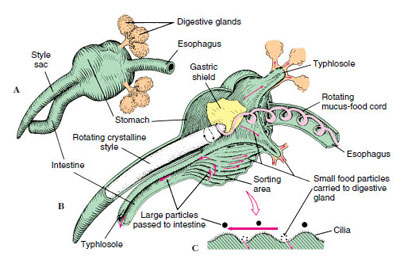
Life Cycle of the Northern Quahog
In general, most clams reproduce in the wild similar the Northern Quahog
Introduction
The hard clam can live up to 30 years (or more) and grow to (on average) 4 inches in length (6″ max).
But, like all living things, they have to start somewhere.
Reproduction
Hard clams begin their lives as males. – protandrous
Sperm cells are much smaller than eggs and require less metabolic energy to produce. Larger clams grow at a much slower rate so more metabolic energy can be devoted to the production of sex cells, thus the switch to the larger eggs.
By the time hard clams reach harvestable size, there is about a 1 to 1 ratio of males to females
In the spring when the bay water temperature rises above 50°F, clams come out of “dormancy” and begin to feed on available phytoplankton.
In late spring into early summer when the water temperature rises above 68°F the adults begin to spawn.
Note: clams are ectotherms (cold blooded) and technically do not hibernate.
Fun Fact: In New Jersey, the minimum size of hard clams that may be harvested is 1 1/2 (1.5) inches in length. Clams can reproduce at about 1 to 1 1/4 inch in length which gives them “protected time” to breed.
 As the embryo grows, the next stage is a ball of cells called the morula
As the embryo grows, the next stage is a ball of cells called the morula
It is derived from the Latin word for mulberry, which it resembles.
 W
W ith further development we see the growth of hair-like cilia and the embryo becomes a free-swimming larva known as a trocophore.
ith further development we see the growth of hair-like cilia and the embryo becomes a free-swimming larva known as a trocophore.
The image on the left depicts the early larval stage while the image on the right shows the fully developed larva
Development to this stage could take from 18 to 48 hours depending upon water temperature
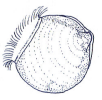
 Next, the larva begins to develop a shell and foot. In this stage, the larva is called a veliger.
Next, the larva begins to develop a shell and foot. In this stage, the larva is called a veliger.
The D-shaped or strait-hinged veliger (left image) is so called because the body side where the hinge is forming is straight while the open valve side is rounded.
The larval shell of the of the umbonate veliger (right image) has the characteristic triangular shape of the hard clam.
Fun Fact – Hard clams are active and grow in water temperature between 50° and 85° Fahrenheit. Above or below those temperatures they enter a state of dormancy called diapause
They are ectothermic (cold-blooded) and technically do not “hibernate”
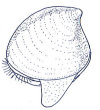 The last phase of the veliger stage is called the The pediveliger (ped = foot) stage.
The last phase of the veliger stage is called the The pediveliger (ped = foot) stage.
This is the final stage prior to settlement and eventual metamorphosis to juveniles (at this stage seed clams).
Pediveligers have a well-developed foot that extends from the shell.
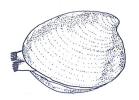 Finally, as a juvenile, the calm has now grown enough and is ready to continue life in the bay bottom. The weight of the shell prevents drifting and the clam settles to the bottom (sets) and uses its foot to dig in and extends its siphons to feed.
Finally, as a juvenile, the calm has now grown enough and is ready to continue life in the bay bottom. The weight of the shell prevents drifting and the clam settles to the bottom (sets) and uses its foot to dig in and extends its siphons to feed.
Development to this stage from the trocophore stage may last from 8 days to 2 weeks depending upon water temperature.
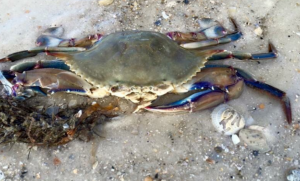 At this point juveniles are vulnerable to many predictors including snails, crabs, sea stars, fish, and birds.
At this point juveniles are vulnerable to many predictors including snails, crabs, sea stars, fish, and birds.
Growing over the summer and fall, depending on environmental conditions, they can reach a size of 1 inch (25mm) + or –
When temperatures regularly fall below 50˚ F they dig in and go dormant until the following Spring emerging as adults to start the breeding cycle for the next generation.





